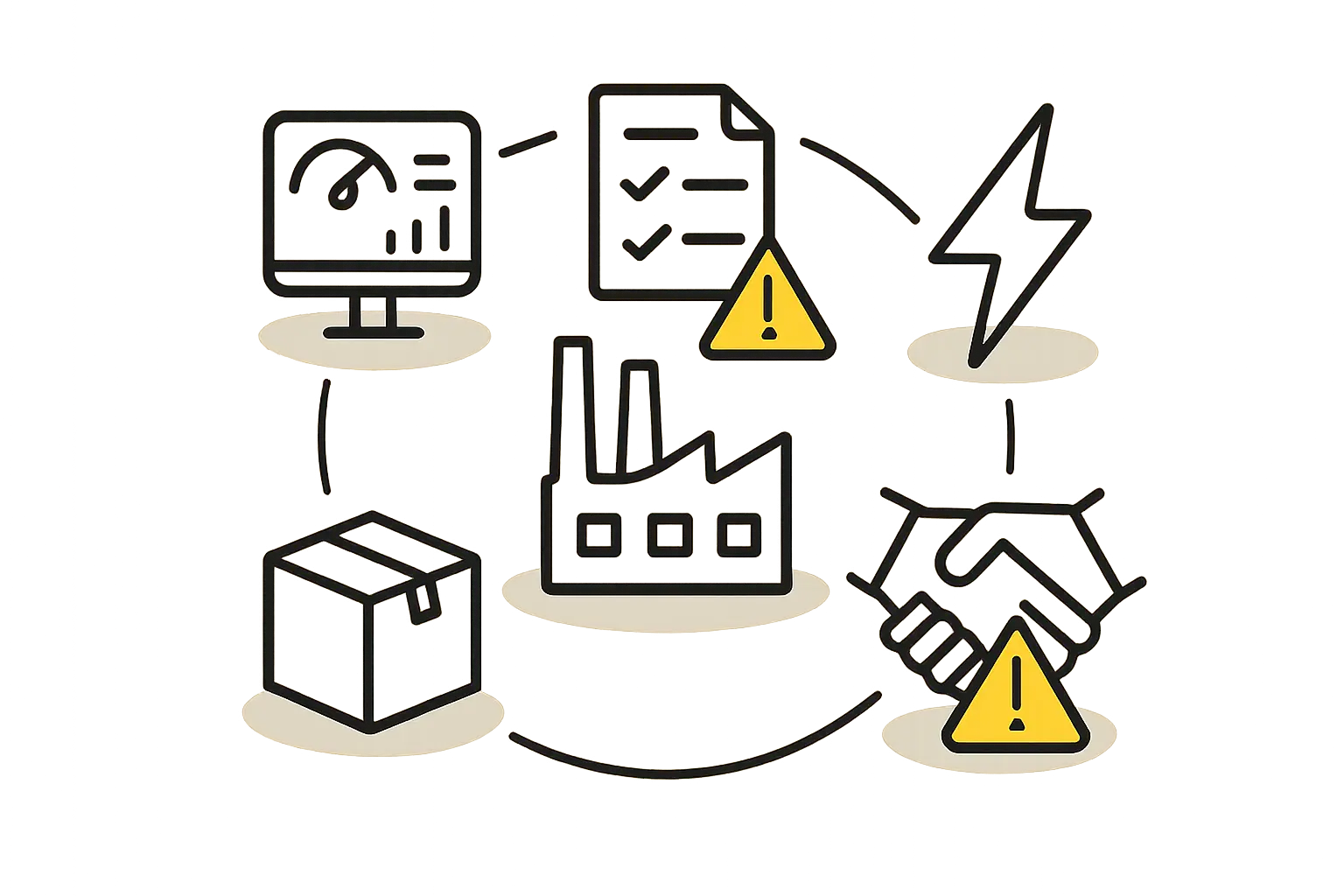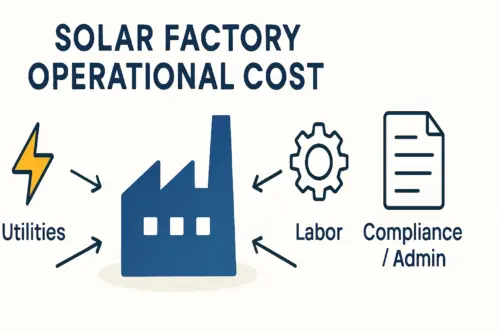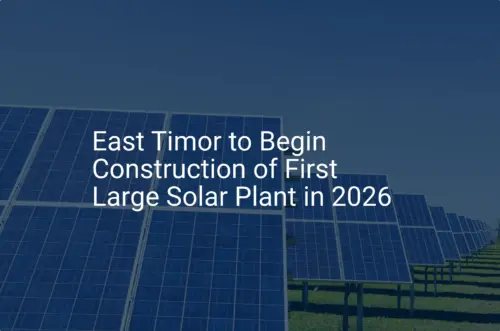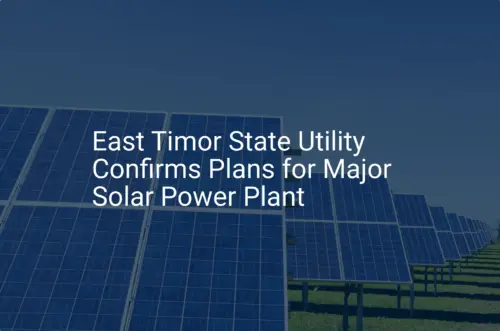For international investors, East Timor is a landscape of significant opportunity. Its strategic location, growing economy, and government support for diversification are compelling factors for new industrial ventures.
However, turning that potential into a successful manufacturing operation, such as a solar module factory, requires a practical understanding of two critical factors: the reliability of the national power grid and the process for securing industrial land.
An investor might envision a state-of-the-art facility, but without a consistent power supply and a clear land title, that vision cannot become a reality. This guide offers a practical assessment of these two critical areas, offering insights grounded in the current operational realities in East Timor to help investors make informed decisions.
Evaluating Power Grid Reliability for Manufacturing Operations
A stable power source is non-negotiable for the sensitive machinery in a solar module manufacturing facility. Unexpected power interruptions can halt production, damage costly equipment, and lead to significant material waste. Any feasibility study must therefore begin with a candid evaluation of the national grid.
An Overview of East Timor’s National Electrical Grid
East Timor’s grid infrastructure has developed considerably, yet it still bears the hallmarks of a maturing system. According to the “National Electrical Grid of Timor-Leste” report, the country’s electricity generation is heavily centralized.
-
Primary Generation Sources: Power is predominantly supplied by two thermal power plants: the Hera Power Plant near Dili and the Betano Power Plant on the south coast. Both facilities rely on diesel generators.
-
Transmission Backbone: These two plants are connected by a single 150 kV transmission line that forms the backbone of the national grid. This creates a single point of failure; any disruption to this line can have nationwide consequences.
-
Distribution and Load Shedding: While the grid reaches all municipalities, its capacity can be strained. During periods of peak demand or when generation units are offline for maintenance, the national utility, EDTL, may implement load shedding (planned power outages) to balance supply and demand.
For a manufacturing plant requiring 24/7 operation, relying solely on this grid structure poses a significant business risk. Intermittent power is not merely an inconvenience—it is a direct threat to production targets and profitability.
Risk Mitigation Strategies for Investors
Ready to make big Profits?
The solar Industry is Booming
WE HELP NEWCOMERS to the solar industry start their own solar module production line. Customers can make BIG PROFITS by selling modules and finding investors, without wasting money and time on things they don't need!
Given the grid’s current state, investors must build a robust power strategy into their business plan. The goal is to create a localized, stable power environment for the factory, independent of grid fluctuations.
-
On-Site Backup Generation: The most common solution is installing on-site diesel generators capable of powering the entire facility during a grid outage. While effective, this approach requires careful financial planning for capital expenditure, ongoing fuel costs, and maintenance.
-
Hybrid Power Systems: A more forward-looking strategy is to implement a hybrid system. An on-site solar PV installation, coupled with a Battery Energy Storage System (BESS), can provide clean, reliable power during the day and act as an uninterruptible power supply (UPS) during grid failures. This can significantly reduce reliance on diesel and offer long-term operational savings, an especially important factor in a region with high solar irradiation. Experience from J.v.G. turnkey projects shows that integrating such a system from the initial design phase is often more cost-effective than retrofitting it later.

Navigating Industrial Land Acquisition
Securing the right location is as critical as securing reliable power. In East Timor, the process is governed by specific laws and administrative procedures that foreign investors must navigate carefully. Understanding these rules is essential for a smooth, legally sound acquisition.
The Legal Framework for Foreign Investors
As detailed in the “Investment Guide to Timor-Leste” published by TradeInvest, the government’s investment promotion agency, foreign nationals and corporations cannot own land outright. Instead, the primary mechanism for securing land is a long-term lease.
-
Leasehold System: Foreign investors can acquire the right to use private and state-owned land through a surface right or leasehold contract.
-
Lease Duration: These leases are typically granted for a maximum of 50 years and are often renewable, providing the long-term security needed for significant capital investment.
TradeInvest Timor-Leste serves as a key facilitator for investors, providing guidance and support through the application and approval process.
The Practical Process of Securing Land
Getting from site identification to a secured lease involves several distinct steps. Rushing this process can lead to significant legal and financial complications down the line.
-
Site Identification: The first step is to locate a suitable parcel of land, considering logistics such as proximity to the Port of Dili, road access, and availability of other utilities.
-
Due Diligence: This is arguably the most critical stage. Investors must engage local legal counsel to conduct a thorough title search with the National Directorate of Land, Property and Cadastral Services (DNTPSC). This process verifies the legal owner and ensures the land is free from competing claims or disputes—a known challenge in the region.
-
Negotiation and Agreement: Once the title is verified, the investor negotiates the terms of the lease with the landowner. For state-owned land, this negotiation is with the relevant government body.
-
Registration: The finalized lease agreement must be formally registered with the DNTPSC to be legally binding.
Securing land for a solar panel production line requires meticulous planning that considers both the legal process and the physical suitability of the site.

Common Challenges and Considerations
Investors frequently encounter a few common hurdles:
-
Title Ambiguity: Historical land ownership records can sometimes be unclear. Rigorous due diligence is the only effective countermeasure.
-
Timeline: The process can take several months. It’s wise to factor this timeline into the overall project schedule.
-
Costs: Investors should budget for legal fees, registration costs, and annual lease payments, which can vary significantly based on location and size.
Frequently Asked Questions (FAQ)
Can a factory in East Timor operate realistically on the national grid alone?
For high-tech manufacturing requiring continuous, stable power, relying solely on the national grid is not advisable due to the risk of load shedding and potential outages. A dedicated on-site backup or hybrid power system is a necessary investment for operational security.
How long does the land acquisition process typically take?
The timeline can vary, but investors should realistically budget for 6 to 12 months from site identification to final registration. This can be influenced by the complexity of the title search and negotiation process.
Are there designated industrial zones with pre-cleared land?
The government is developing industrial zones, such as the area around the Tibar Bay Port. These zones can simplify the acquisition process, as the land is often pre-designated for industrial use with established utility connections. Investors should inquire with TradeInvest for the latest updates.
What is the primary difference between acquiring land in Dili versus a special economic zone?
Special Economic Zones, such as the ZEESM TL in Oé-Cusse, often operate under a different administrative and legal framework. They may offer streamlined processes, specific tax incentives, and dedicated infrastructure, but could also have unique regulatory requirements.

Conclusion: Building a Foundation for Success
Investing in East Timor’s manufacturing sector holds considerable promise. However, success depends on building a project on a solid foundation. This means addressing the operational realities of power and land head-on.
A proactive strategy for energy independence mitigates risks from the national grid, while a diligent, legally sound approach to land acquisition prevents future disputes and ensures long-term security. Understanding these local conditions is essential before delving into the specifics of factory building requirements or equipment selection. By planning for these foundational elements from the outset, investors can position themselves for sustainable and profitable operations.






